8 retail technology predictions for 2017
By Sharon Goldman as written on www.cio.com
Consumer confidence reached new heights in 2016, technology contributed mightily to the retail and ecommerce success. Here are the top tech predictions for retail in the coming year.

Shoppers opened their pocketbooks wide over the holidays in 2016, pushing retail growth estimates (the Wall Street Journal reported the fastest growth rate since 2005) and consumer confidence to new heights — with ecommerce a particular bright spot with over $110 billion in sales, according to Forrester Research. Technology contributed mightily to that retail success, at every stage and angle of the shopping journey, both in brick-and-mortar stores and online — from browsing, point-of-sale and shipping to checkout, supply chain, payments and much more. That won’t change in 2017, as top retailers have already long-planned their technology priorities for the coming year. Here, experts weigh in on some of their top technology predictions:
1. Alternative checkout methods will continue to grow.
With a smartphone in every pocket and the expansion of advanced barcodes and imaging technologies for scanning products, faster alternative checkout methods will continue to grow across the retail sector, says Tony Rodriguez, CTO of digital identification solutions provider Digimarc. “Sam’s Club already offers in-aisle checkout, while Amazon gained attention for its vision of grocery shopping sans checkout lines, so anticipate that other grocers and retailers will seek shortcuts for shoppers that they hope will breed brand loyalty,” he says. “We expect retailers and brands to lead the way with enhanced product packaging and other options for easy checkout.”
2. The store associate will become a high-tech hub.
The No. 1 investment in retail will be the store associate and how to turn them into a beacon of knowledge and relationship builder, says Bill Zujewski, executive vice president of marketing at mobile platform Tulip Retail. Retailers have begun investing in mobile solutions that give access to the entire product inventory and product details, but that’s no longer enough — instead, store associates need to be able to anticipate and surpass customer expectations.
“When a customer comes into the store, sales associates will be notified and ready with product offerings based on valuable data they have at their fingertips including the customer's recent purchases, loyalty rewards level, online browsing history, activity log and shopping preferences,” he says.
3. Chatbots will become a priority retail channel.
[This year] will be a foundational one when it comes to applying AI-powered chatbots that are improved with new data streams and integration across channels, says Dave O’Flanagan, CEO and co-founder of cloud platform Boxever. “Chatbots are only as valuable as the relationships they build and the scenarios they can support, so their level of sophistication will make or break them,” he says. A recent survey found consumers aren’t yet as excited about responsive chatbots as brands think — so retailers will need to focus their attention on improving their messaging applications to establish more meaningful connections between their brand and customer, he adds.
4. The internet of things (IoT) will boost supply chain efficiency.
IoT is helping retailers connect physical and digital worlds and to facilitate real-time interaction with consumers both inside and outside the store, says Andrew Hopkins, IoT lead for retail at Accenture Mobility, part of Accenture Digital. “Connected devices and products will enable retailers to optimize operations in the face of a more complex supply chain, increasingly important digital channels, and evolving customer demands,” he explains.
Some examples: Managers could use smart tags to adjust pricing in real-time; IoT-enabled sensors would allow store managers to monitor and adjust lighting and temperature settings; businesses could use sensors to automate manual functions such as tracking inventory or changing prices. “This would give sales associates more time to spend interacting with customers, further improving the in-store experience,” he says.
5. Social media will continue to become more shoppable.
Retailers have learned to love consumer-generated content, with photo sharing and hashtags turning into word-of-mouth marketing that works. Now, we’ll begin to see more retailers investing in technology that makes those content experiences more shoppable, says Jim Rudden, CMO of Spredfast. “Instead of having to leave the page or site to search and buy the products they see in photos, consumers will be able to easily click on the content, and purchase the products within, during that moment of discovery,” he says. “Those consumer-generated pieces will take on a whole new life.”
6. Digital convergence will be a big buzzword.
The ecommerce of 2017 and beyond will be all about starting to focus on the convergence of a variety of digital technologies — using voice interfaces, the power of AI and realistic, personalized avatars that support the shopping experience, says Shirley Romig, global retail strategy lead of digital marketing consultancy SapientNitro. “Imagine talking to your personal shopper on the phone and instantly seeing an assortment of dresses you are looking for to wear to your daughter’s graduation,” she says.
“You digitally ‘try on’ the dress using your exact, 3-D image for fit, tell your shopper to size up and check out via voice command.” Ecommerce will evolve to include AI-powered online, personal shoppers that are trained to know preferences, like a favorite store sales associate: “Instead of onerously sorting through pages of product, soon you’ll be able to talk to your AI via your mobile phone and ‘she’ does all the leg work.”
7. 2017 will be the year of the retail API.
APIs have revolutionized industries by bringing consumers apps such as Uber, Google Maps and Pandora — now, retail has started to catch on, says Jett McCandless, CEO of supply chain technology provider project44, though he adds there are still strides to be made in the industry’s widespread understanding and implementation of APIs.
“Retail CIOs will need to understand the impact this technology has on inventory optimization; setting — and meeting — customer delivery expectations; adhering to the demands of today’s always-on consumer and driving real-time visibility across the entire supply chain network,” he says. “Web-service APIs empower retailers to compete in the new on-demand reality by delivering goods in the shortest timeframe possible with the highest level of transparency and operational efficiency.”
8. Mobile payments UX will become more seamless.
Retailers know consumers want a seamless shopping experience — and mobile payments technologies are struggling to bridge the gaps. Look for greater consistency in UX across payment platforms in 2017, as well as increased security measures and the introduction of digital verification solutions, says Cody Winton, CEO and co-founder of personal identity platform Credntia.
“There will be efforts to create a more cohesive payments process, and ease fragmentation across platforms and solutions in the FinTech space,” Winton says. “For example, the introduction of a digitally-scanned license or passport at point of sale will create a seamless user experience by allowing consumers to conveniently switch between the mobile wallet or banking app and a digital credential management app, instead of needing a physical wallet.”
[vc_row][vc_column][vc_column_text]
New vs. old in back-to-school gear
Ultrathin laptops help you find information, but writing things down, on paper, in a notebook, helps you learn and remember. Wireless headphones make your music better and more portable, but earplugs ensure sleep. And though your smartphone is the camera you always have with you, an instant camera creates actual moments you share with just one person, not the world (on purpose or accidentally).
In short: You’re heading to school with a lot of trendsetting new gear, but you still need the stuff that generations of students lugged along, too. At Wirecutter, we research and test both the cutting-edge and the old and solid, and we think these items are the best buys for your college days.
Notebook (silicon) and notebook (paper)
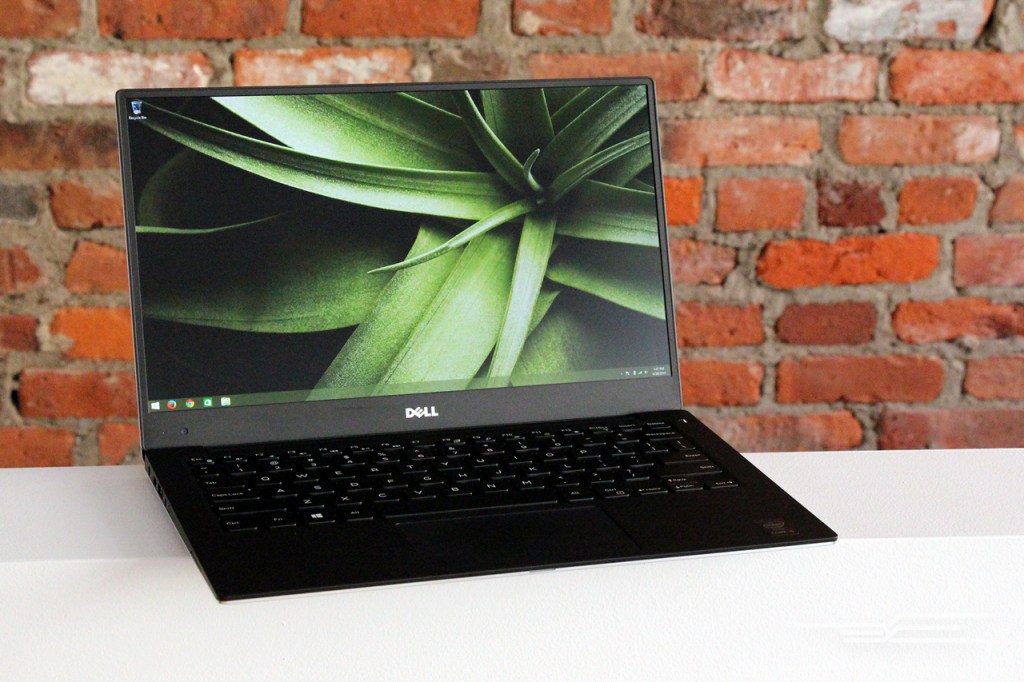
Danby’s Designer Stainless microwave will last you all through college, and maybe even longer (unlike your textbooks). Photo: Katie Hausenbauer-Koster
If you need an ultra-portable laptop before school starts, and a Mac isn’t a requirement, you should get a Dell XPS 13 (late-2015 model), the best Windows ultrabook for most people. It has a big, beautiful screen, the longest battery life of any lightweight Windows laptop we tested, a keyboard second only to ThinkPads in quality, a solid trackpad, and the best-designed body.
If you need to save some money, the Asus ZenBook UX305UA is a fantastic Windows ultrabook for its price; it has a little less battery life (though still great), and a slightly lesser keyboard and trackpad, but those are reasonable sacrifices.
We’d like to recommend a MacBook, but the timing is terrible right now, thanks to a conspicuous lack of current-generation processors and USB-C ports across nearly the whole MacBook line. If you specifically need OS X (soon to be macOS) for school or work, you should try to wait until Apple updates its lineup, which we expect very soon. If you need a Mac now, check out our “Which MacBook Should I Buy” guide.
As for the other notebooks—the kind you don’t charge—we recommend the Mead Five Star as the perfect choice for an affordable, single-subject spiral-bound notebook. We picked the Five Star after subjecting some of the most popular notebooks to everyday writing, and then heavy abuse (such as throwing them down stairs and soaking them in water). You can write smoothly and crisply on the Five Star using an array of pens and pencils, with minimal bleed-through with all but the wettest of inks. And because it’s both perforated and hole punched, you can easily remove clean-edged pages or snap the whole thing into a binder. If you’re looking for something a little more affordable (especially if you find it on sale), the basic Mead Spiral has similar paper quality without the bonuses.
If you need a pen to take notes in class or to write exam essays, the one to grab is the Uni-ball Jetstream. It’s widely available and it creates one of the smoothest, quickest-drying lines you can find. And if you need a mechanical pencil to go with it, we recommend the Uni-ball Kuru Toga. Unlike any other widely available pencil, the Kuru Toga has a unique ratcheting internal mechanism, so each time you lift the pencil from the page, the lead rotates a tiny amount. What does that mean? The sharpest point of your lead will always touch the paper, and you won’t constantly fidget to rotate the pencil in your hand.
Headphones and earplugs
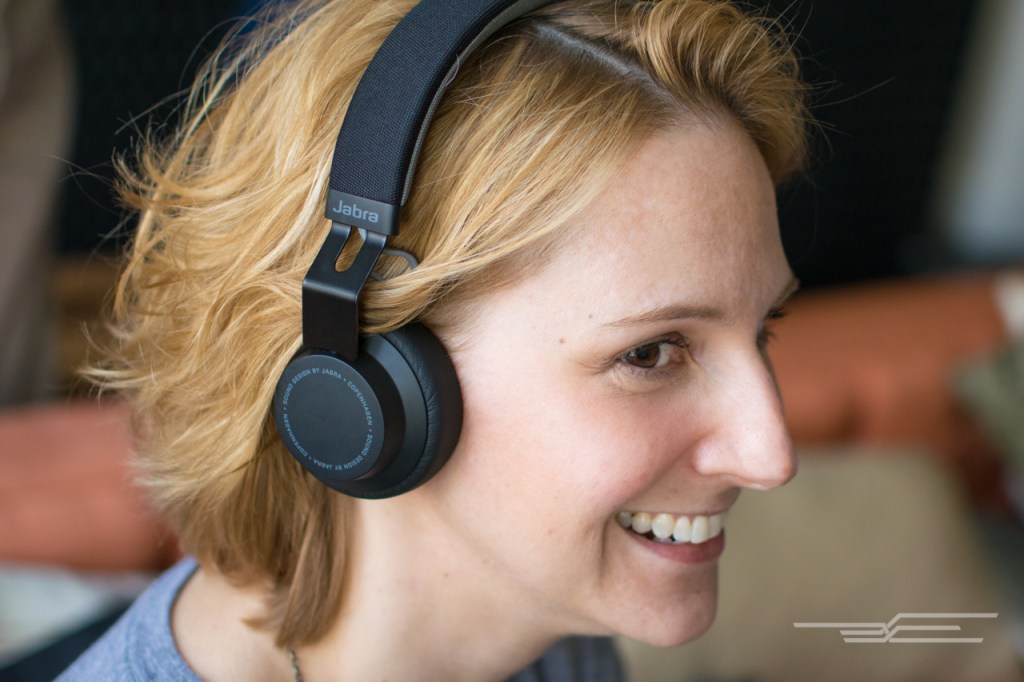
Jabra’s Move Wireless headphones sound better than headphones costing twice as much, and are more comfortable than most. Photo: Michael Zhao
A set of comfortable, closed, on-ear headphones is great for enjoying music, videos, or games without disturbing your roommate, or for jamming through a study session at the library. After researching 93 models and testing the 55 best-reviewed and newest models, our headphone experts picked the Jabra Move Wireless as a great set at a great price.
Latest Crunch Report
Of the Bluetooth headphones we tested in this price range, the Move pair was among the best sounding, beating out models that cost almost twice as much. In fact, it sounded about 75 percent as good as our luxury pick, at less than one-fifth the price. Unlike other Bluetooth headphones, which tend to be full of confusing buttons, the Move offers easy-to-use, easy-to-understand controls and a comfortable feel on your head. Best of all, it’s affordable: You can usually find it for a good amount less than its $100 MSRP.
If you need to hear less music (or phone calls, or hall noise) to study or sleep, keep a trusty pair of disposable earplugs handy. We spent several hours researching contenders, tested four top-rated models, and slept in a house next to an airport. Mack’s Ultra Soft Foam Earplugs emerged as the best earplugs for most people. These earplugs’ 32-decibel noise-reduction rating was one of the highest among the models we tested. According to safety-equipment distributor Cooper Safety, that’s enough to reduce the volume of a gas lawnmower to that of a normal conversation. What also makes Mack’s earplugs so effective is their ability to stay in your ear through a whole night and remain comfortable, unlike some of the competition.
Messenger bag and backpack
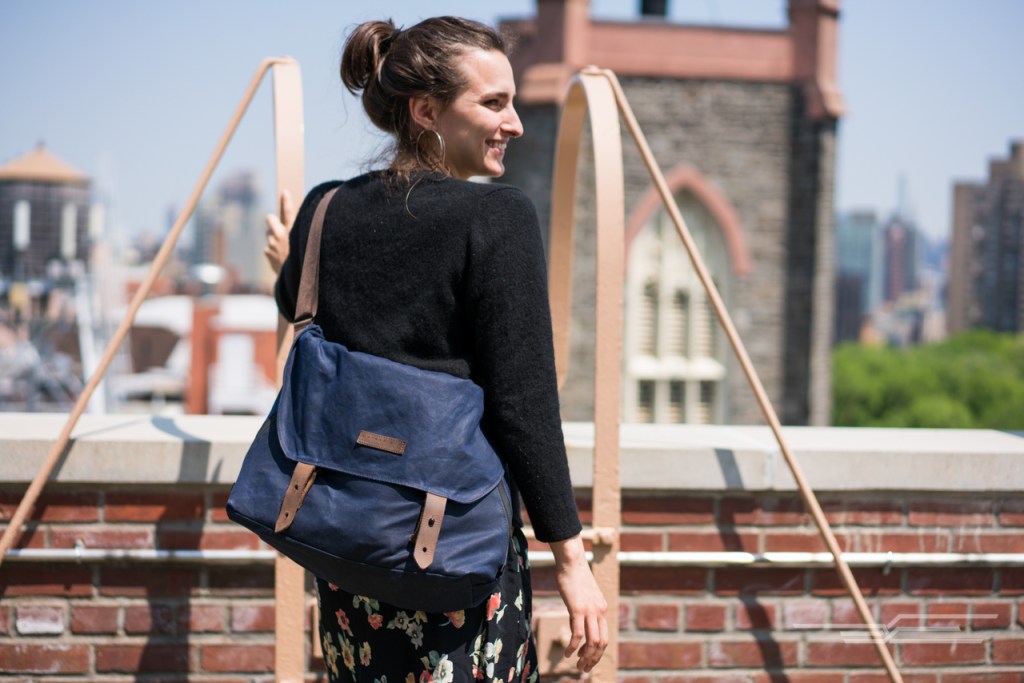
The Waterfield Vitesse looks great and holds up in school, city, and outdoor environments. Photo: Michael Hession
The Waterfield Vitesse is a great choice whether you get to school via bike, foot, bus, or crowded subway car, and need a stylish bag that can transition well into night use. The Vitesse is surprisingly roomy and tough, with a sleek appearance that looks natural at a party or out to dinner.
Its waxed-canvas finish is durable, it’s lightweight at just 1.9 pounds, and though not technically waterproof, it sheds stains and water easily, and cleans up with just a simple wipe-down. The Vitesse has an unpadded laptop pocket that can accommodate a 15-inch MacBook Pro (though you can add your own sleeve), an accessible front zip pocket, and three small organizing pockets that are perfect for your keys, wallet, and other miscellany.
If you prefer the classic look of a backpack, we recommend the L.L.Bean Quad. Compared with similarly priced competitors, our pick balances comfort and a smart blend of school storage and hiking comfort features at a nice price. You can find cheaper bags that’ll hold up fine for a few years at school, and pricier options that might serve you better on a mountain trail, but the Quad is a pick that’s tough, versatile, and affordable. We particularly love its large, zippered exterior pouch that gives you almost instant access to anything from a notebook to a fully packed bag lunch. Its ventilated and mesh-padded back also won’t leave you with a too-sweaty back after a walk in the summertime.
Rice cooker and microwave
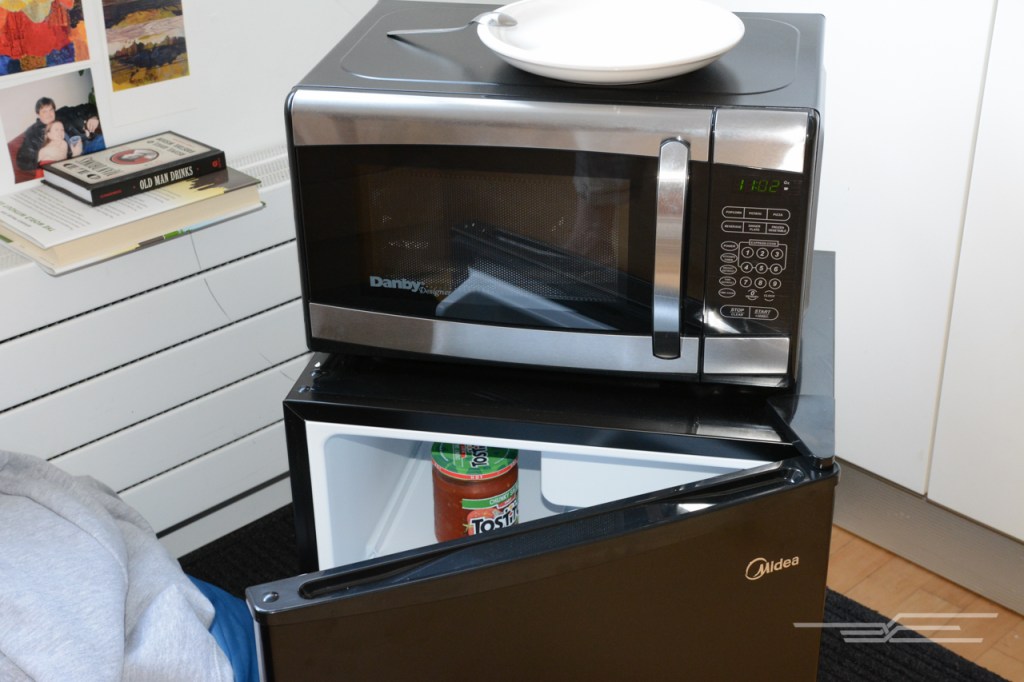
Danby’s Designer Stainless microwave will last you all through college, and maybe even longer (unlike your textbooks). Photo: Katie Hausenbauer-Koster
ASUS
Founded 1990
Overview ASUS is a global technology leader in the digital era. It is the world’s top 3 consumer notebook vendor and the maker of the world’s best-selling and most award-winning motherboards. ASUS is the number one manufacturer of motherboards in the world, commanding almost a 40% market share of the motherboard business. Today, one in every three computers houses an ASUS motherboard. Over 24 million …
-
- Founded2010
- OverviewGN Netcom, led by the Jabra brand, continues to build on its standing as one of the world’s leading and fastest growing suppliers of hands-free communications solutions. With approximately 875 employees and sales offices around the world, GN Netcom develops manufactures and markets a broad range of wireless headsets for mobile users and both wireless and corded headsets for contact centre and …
- LocationBallerup, 17
- CategoriesHardware, Software
- Websitehttp://www.jabra.com
- Full profile for Jabra
-
-
- Founded1934
- OverviewFUJIFILM Corporation is one of the major operating companies of FUJIFILM Holdings. Since its founding in 1934, the company has built up a wealth of advanced technologies in the field of photo imaging, and in line with its efforts to become a comprehensive healthcare company, Fujifilm is now applying these technologies to the prevention, diagnosis and treatment of diseases in the Medical and Life Science …
- LocationTokyo, Tokyo
- CategoriesHardware + Software
- Websitehttp://www.fujifilm.com
- Full profile for FUJIFILM
Despite retailing for less than half the price of some competitors, the Digital Simplicity earned the top spot in our taste tests for white rice. Its speed was also impressive, as it produced a 3-cup batch of white rice in less than 38 minutes and brown rice in 1 hour, 20 minutes—12 and 25 minutes faster, respectively, than the higher-end Zojirushi NS-TSC10. A delayed-start option, a dedicated steam mode, and a boil-then-simmer function add to the Digital Simplicity’s versatility.
Microwaves enable the enjoyment of late-night leftovers, piping-hot popcorn, and even full meals for one in the comfort of your dorm room. After 18 hours of research and considering eight popular models, we think the Danby Designer Stainless is the best microwave for dorm rooms because it has a handle instead of the more common, ever-breaking push-button door mechanism.
The Danby also has a start button that doubles as an “add 30 seconds” button—we learned this was a must-have feature for many people when we researched the best full-size microwaves. At about 17 by 14 by 10 inches, this 0.7-cubic-foot, 700-watt microwave fits perfectly on top of a mini fridge and uses less power than the more common 1,000-watt models, which means it’s less likely to trip your breaker when it’s sharing a circuit with a kettle, the fridge, and your laptop.
Desk lamp and book light
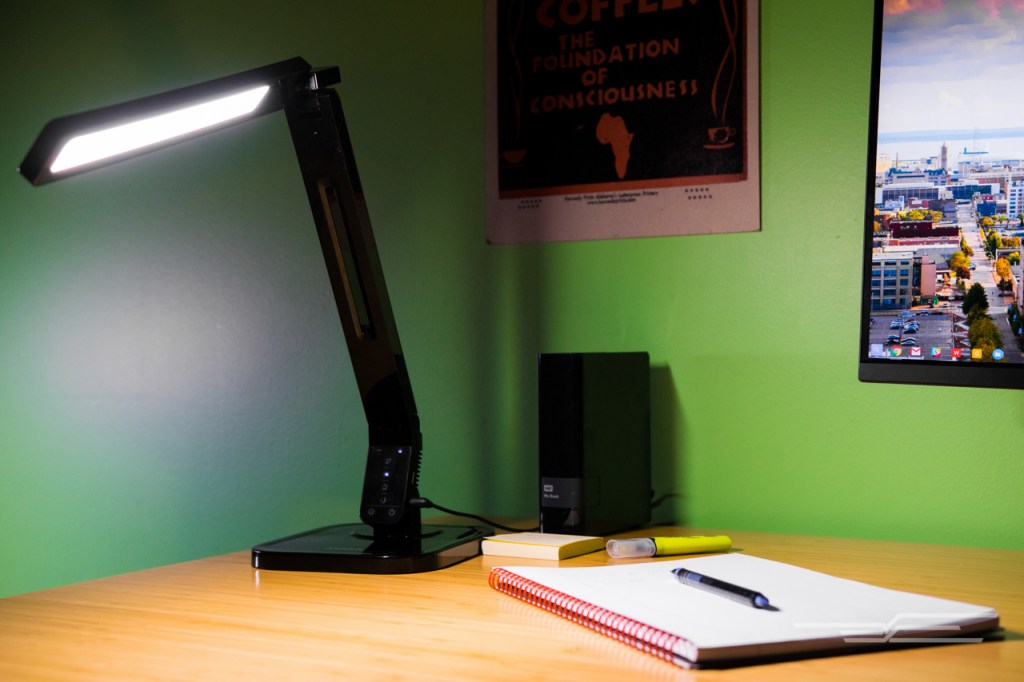
The Anker Lumos swivels, folds up, and has four color temperatures at five levels each. Photo: Kevin Purdy
Dorm desks aren’t renowned for their expansive surfaces, so the best desk lamp for a first-year student should be compact, adjustable in height, and sufficiently bright for late-night cram sessions. If you study in the very early morning or late at night—as students are known to do—the Anker Lumos LED Desk Lamp can add the right light mixture to your space.
The Lumos has four color modes (Reading, Studying, Relax, and Bedtime) and five brightness levels. Its base rotates 180 degrees, pivots at three points, and has a decent-looking control panel with a sleep timer―all handy features if you’ve got books spread out, or need to accommodate a sleeping roommate. Most lamps with all of those modes and options cost $10 to $30 more than the Lumos. And the Lumos beams its light in a wide, even glow from a continuous panel, not a strip with visible tiny bulbs.
The Anker does look a little techy, and though it’s a great value, its price could be a turnoff to those on a tighter budget. For them, the IKEA Forså (available in store only) is an adjustable, attractive, very affordable alternative. It looks better than any multiple-setting LED lamp we saw at a reasonable price, it has a 6-foot-long cord, and a small weighted base that frees up desk pace.
The drawback: IKEA sells bulbs for the Forså only with a 2,700-kelvin “warm daylight” temperature, and LED candelabra bulbs with a cooler temperature are uncommon and somewhat pricey. That limitation is fine if you use the Forså exclusively for calm reading or nighttime work. If you use it as your main desk light, your other lighting must be warm, or the conflicting temperatures (colors) may cause discomfort.
For reading in bed after a roommate is asleep, a reading light (aka book light) is more discreet. After testing three top-rated lights, we recommend the Mighty Bright XtraFlex2. Compare it with the competition, and you’ll see why the XtraFlex2 is the multiyear best-selling book light on Amazon. On its low brightness setting, it emits just enough light for personal reading, but not so much it leaks beyond the book. And on its high brightness setting, the light is perfect for late-night object searches.
GET IT HERE
iPhone lenses and instant camera
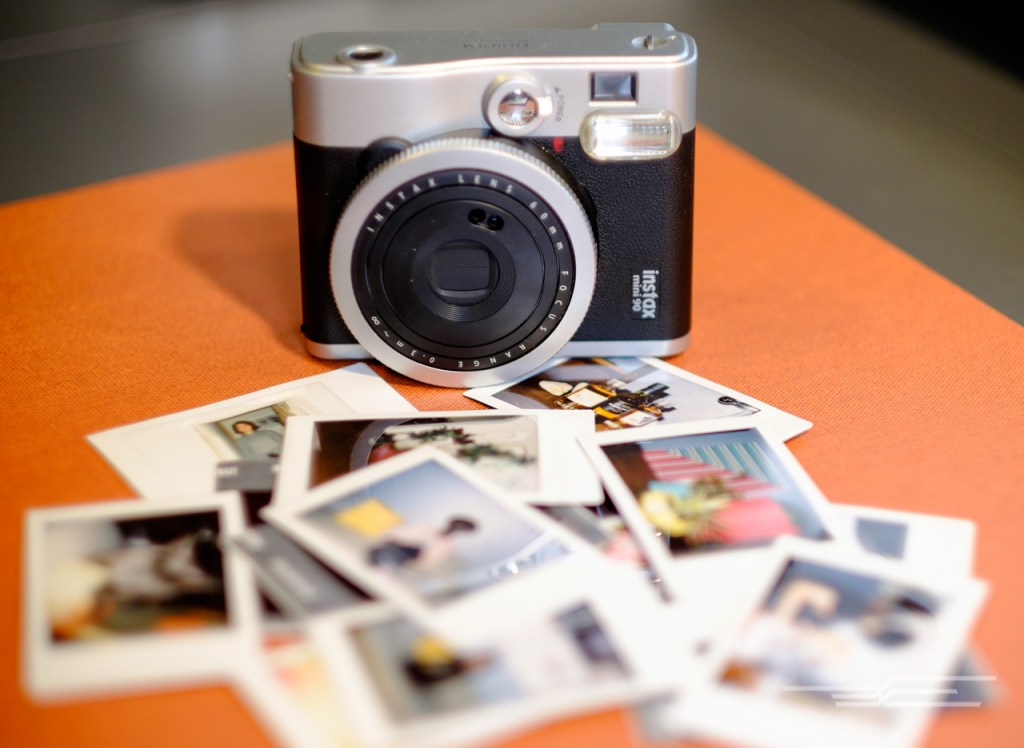
The Instax Mini 50S captures the moment better than most instant cameras, and you can easily order more film. Photo: Gregory Han
Taking better, more interesting iPhone photos can be done at a very reasonable price. For $45, the CamKix Camera Lens Kit provides four lenses―fisheye, combo macro, wide-angle lens, and 8x tele―and a mini-tripod. Though the image quality isn’t the best available, it’s better than anything else at that price, and good for someone who wants to mess around with different lens types. We were initially extremely skeptical of the looks and quality of the multi-lens assortment, especially the shot-glasslike 8x tele. But we were pleasantly surprised by the reasonably good photo quality.
Sharing photos to dozens or hundreds of people from a smartphone is easy, but to create something tangible and exclusive, an instant film camera is an analog throwback still worth the price. The best instant film camera we’ve found is the Fujifilm Instax Mini 50S. It’s easy (and fun) enough to use that you can pass it around at a party, and it takes better photos than most instant cameras. The Instax film it uses is still widely available, too, and if you want to put more time and effort into it, you still have plenty of manual controls to fiddle around with.
[/vc_column_text][/vc_column][/vc_row]






